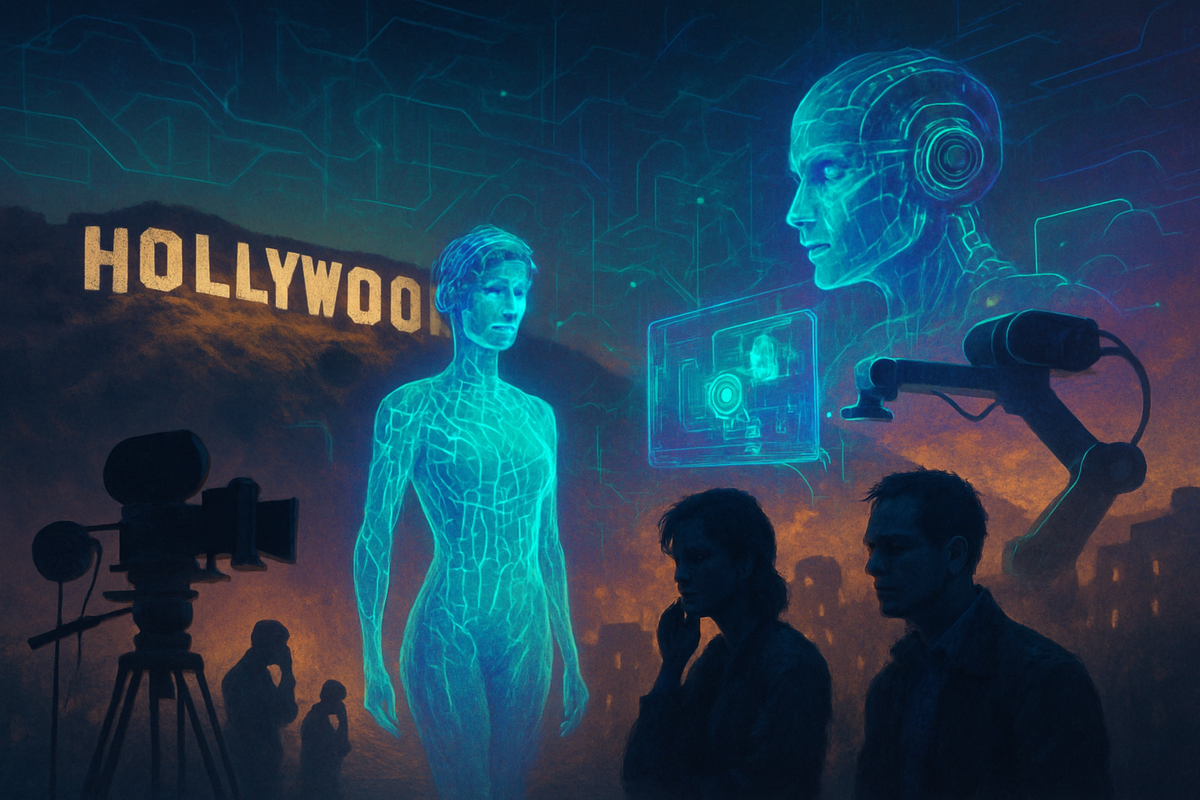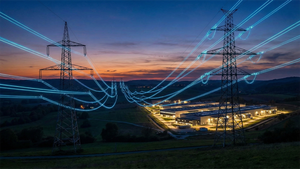
Hollywood is grappling with an unprecedented technological shift as Artificial Intelligence rapidly moves from behind-the-scenes tool to on-screen talent and even directorial authority. The recent debut of Tilly Norwood, hailed as the world's first AI actor, has ignited a furious debate across the entertainment industry, prompting widespread outrage and existential questions about the future of human creativity and livelihood. Simultaneously, the quieter but equally profound emergence of AI directors is reshaping production pipelines, signaling a new era where algorithms could command the creative helm. As of October 1, 2025, these developments are not futuristic hypotheticals but present-day realities, forcing an immediate and often contentious re-evaluation of what it means to make movies and television.
The Unveiling of AI Talent: Tilly Norwood and the Rise of Algorithmic Auteurs
The entertainment world was sent into a collective shockwave following the debut of Tilly Norwood, an AI-generated performer, at the Zurich Summit on September 27, 2025. Created by Dutch producer and comedian Eline Van der Velden through her company Xicoia, positioned as the world's first AI talent studio, Norwood's introduction was met with immediate and fierce backlash. Xicoia, a spin-off from Van der Velden's existing AI production company, Particle6, showcased Norwood in a brief comedic video titled "AI Commissioner." Van der Velden defended her creation, asserting that Tilly Norwood is "not a replacement for a human being, but a creative work—a piece of art," likening AI to a "new paintbrush" that expands creative possibilities. However, her claim that Norwood could be "the next Scarlett Johansson or Natalie Portman" only intensified the industry's anxieties.
The reaction from established Hollywood figures and unions was swift and overwhelmingly negative. The Screen Actors Guild‐American Federation of Television and Radio Artists (SAG-AFTRA) issued a scathing statement on September 30, 2025, declaring that "creativity is, and should remain, human-centred" and that "Tilly Norwood is not an actor, it's a character generated by a computer program that was trained on the work of countless professional performers — without permission or compensation." High-profile actors voiced their dismay, with Emily Blunt exclaiming, "Good Lord, we're screwed. That is really, really scary." Whoopi Goldberg on "The View" highlighted the "unfair advantage" of competing against AI trained on thousands of human performances, while Natasha Lyonne called for a boycott of any talent agency engaging with such technology. Director Luca Guadagnino ominously stated that an "AI actor" signifies the "end of the industry as we know it." These reactions underscore deep-seated fears about job displacement, intellectual property rights, and the ethical implications of using human performance data without consent or compensation.
Parallel to the controversy surrounding AI actors, the role of Artificial Intelligence in direction is steadily evolving, albeit with a more nuanced reception. While there hasn't been a single, universally recognized "first AI director" causing a similar public uproar, AI tools are increasingly integrated into every stage of filmmaking. From scriptwriting and story development to casting, visual effects, and optimizing production workflows, AI is becoming a sophisticated assistant, if not a creative partner. Companies like ReelMind.ai introduced their "Nolan AI Agent Director" in May 2025, promoting it as an intelligent creative partner aimed at democratizing professional filmmaking. This signifies a shift where AI is moving beyond mere post-production assistance to core creative and pre-visualization functions, allowing directors to rapidly iterate on ideas and refine concepts. While some view AI as a powerful tool to enhance efficiency and creative output, concerns persist regarding job security for human directors and the ultimate authorship of artistic vision. The 2023 SAG-AFTRA strike notably included AI's use as a key bargaining point, reflecting the industry's apprehension about maintaining human control and compensation in an increasingly automated landscape.
The Shifting Sands of Fortune: Winners and Losers in the AI Revolution
The rapid integration of AI into Hollywood is creating a stark dichotomy of potential winners and losers across the financial landscape, fundamentally altering business models for studios, visual effects (VFX) houses, talent agencies, and the tech giants powering this transformation. As of October 1, 2025, the market is beginning to price in the profound implications of this technological reckoning.
Major studios, including The Walt Disney Company (NYSE: DIS), Netflix, Inc. (NASDAQ: NFLX), and Warner Bros. Discovery, Inc. (NASDAQ: WBD), stand at a crucial juncture. On one hand, AI promises unprecedented cost reductions and efficiency gains. Studios can leverage AI for script analysis, generating concept art, automating repetitive post-production tasks like editing and sound design, and even creating entire digital environments, potentially slashing production timelines and budgets. Netflix, for example, is already utilizing AI to accelerate visual effects, completing complex scenes faster and more economically. This efficiency could lead to higher profit margins and increased content output, potentially boosting subscriber engagement for streamers like Disney+ and Netflix. Studios with vast intellectual property libraries, such as Disney, could also use AI to generate new narratives or digitally de-age actors, maximizing their existing assets. However, studios face significant risks, primarily from talent backlash and union disputes. The fierce opposition to Tilly Norwood from SAG-AFTRA and prominent actors underscores the potential for renewed strikes, legal battles over likeness rights, and increased demands for AI-specific compensation. Over-reliance on AI could also diminish creative authenticity, alienating audiences. Studios that skillfully navigate these ethical and labor challenges while capitalizing on AI's efficiencies are likely to see improved profitability and potentially higher stock valuations, while those that falter could face market volatility and reputational damage.
VFX companies, such as Industrial Light & Magic (a division of Lucasfilm, owned by Disney) and Weta FX (partially owned by Unity Technologies (NYSE: U)), are at the epicenter of this technological shift. AI is revolutionizing VFX by automating labor-intensive tasks, generating photorealistic environments and characters faster, and enhancing overall realism. This allows VFX houses to take on more complex projects and accelerate delivery, potentially leading to increased demand for specialized AI-powered services. However, this also presents a significant threat: job displacement. Generative AI could drastically reduce the need for traditional VFX artists, with some experts predicting an 80% cut in workforce once the technology matures. Studios might also bring more VFX work in-house using AI tools, reducing reliance on external vendors. VFX companies that proactively invest in proprietary AI tools and reskill their workforce in AI-enhanced techniques are poised to thrive, while those slow to adapt risk obsolescence and declining market value.
Talent agencies, including Creative Artists Agency (CAA) and William Morris Endeavor (WME), face perhaps the most profound existential crisis. The widespread adoption of AI actors and directors could significantly reduce the demand for human talent across the board, from background actors to leading roles, directly impacting agencies' core business. If studios can easily generate digital performers, the bargaining power of human talent and their agents would diminish considerably. While some agencies might explore representing digital likenesses or AI creators, the immediate backlash against Tilly Norwood highlights the ethical and public relations minefield involved. Agencies that successfully pivot by establishing new representation models for digital assets and AI-savvy creatives, and master the new legal landscape of AI contracts, may find new avenues for growth. However, those heavily reliant on traditional human talent representation, especially if resistant to adapting, are likely to see their business models challenged and valuations decline.
Conversely, AI tech providers are positioned as clear winners. Companies like Adobe Inc. (NASDAQ: ADBE), NVIDIA Corporation (NASDAQ: NVDA), and Alphabet Inc. (NASDAQ: GOOGL) (parent company of Google) are providing the foundational tools and infrastructure for Hollywood's AI transformation. Adobe is actively integrating AI into its Creative Cloud suite (Premiere Pro, After Effects) for tasks like intelligent clip search and generative video extensions, while its Firefly models are used for storyboarding. NVIDIA, with its powerful GPUs and AI platforms, is indispensable for training and running complex AI models used in rendering, simulation, and real-time content creation. Google is actively partnering with Hollywood, offering its text-to-video tool Veo and generative video editing suite Flow, and licensing content to train its AI models. These companies are poised for significant growth, driven by increasing demand for their software, hardware, and cloud services, with their stock prices likely to reflect their foundational role in enabling this industry shift. They may face ethical and IP liabilities if their models are trained on copyrighted material without proper licensing, but their overall trajectory appears strongly upward.
A Sea Change for Creativity: Wider Implications and Historical Echoes
The emergence of AI actors and directors in Hollywood is not an isolated phenomenon but a critical facet of a broader, accelerating trend of automation and digital transformation sweeping across industries globally. For entertainment, this means a fundamental re-evaluation of production paradigms, artistic authorship, and economic models. AI is rapidly streamlining workflows, automating tasks from script analysis and pre-visualization to complex visual effects, promising unprecedented efficiencies and cost savings. Virtual production, leveraging AI with real-time rendering, allows filmmakers to manipulate digital environments on set, offering creative control previously unimaginable and reducing reliance on expensive physical locations. This digital shift also enables hyper-personalized content creation, with AI algorithms tailoring narratives and recommendations to individual audience preferences, driving engagement in an increasingly fragmented media landscape.
The ripple effects of Hollywood's AI reckoning are already being felt across related creative industries. In the music industry, AI is deeply embedded in composition, production, mastering, and marketing, generating melodies, lyrics, and even replicating vocal tones. While this democratizes music creation, it also raises concerns about job displacement for human composers and musicians and the potential for AI-generated content to saturate platforms, marginalizing human artists. Similarly, the publishing industry is experiencing its own AI revolution, with tools assisting authors in brainstorming, drafting, and refining manuscripts, and even creating entire books. This accelerates production and enables personalized content, but also sparks fears of low-quality, AI-generated content flooding digital marketplaces and complex intellectual property dilemmas.
The rapid advancement of AI has necessitated an urgent response from regulators and policymakers, particularly concerning intellectual property (IP) law, labor law, and ethical guidelines. In IP, the U.S. Copyright Office and courts generally maintain that works created solely by AI are not copyrightable, as copyright requires human authorship. However, the use of vast datasets of copyrighted human-created works to train AI models has led to numerous legal disputes, with major studios like Disney, Universal, and Warner Bros. initiating lawsuits against AI companies for alleged "willful and brazen" copyright infringement. On the labor front, the 2023 strikes by the Writers Guild of America (WGA) and SAG-AFTRA brought AI to the forefront, resulting in historic agreements that protect human creatives. The WGA's Minimum Basic Agreement prohibits AI from receiving writing credit and ensures writers cannot be compelled to use AI. SAG-AFTRA's Basic Agreement mandates informed consent and compensation for any use of an actor's likeness, voice, or performance generated or altered by AI. Furthermore, states like California and New York have enacted legislation (effective January 1, 2025) requiring contractual consent for digital replicas, and Tennessee's ELVIS Act (2024) protects performers' voices and likenesses from unauthorized AI replication. Ethically, concerns about authenticity, consent, bias, and transparency are paramount, pushing for clear labeling of AI-generated content and careful development to mitigate algorithmic biases.
This current moment in Hollywood echoes historical precedents of disruptive technological shifts that fundamentally reshaped the entertainment industry. The transition from silent films to "talkies" in the late 1920s rendered many silent film stars and directors obsolete if they couldn't adapt, while creating new demand for sound engineers and dialogue writers. The advent of color film transformed visual storytelling, opening new aesthetic possibilities. Most recently, the introduction of Computer-Generated Imagery (CGI) from the 1990s onwards profoundly impacted visual effects, allowing for the creation of impossible worlds and creatures, while also altering the work of practical effects teams. In each instance, new technology was met with skepticism, fears of job displacement, and debates over artistic authenticity, but ultimately led to new creative forms, streamlined production, and expanded audience experiences, often resulting in a redefinition of roles rather than outright elimination. AI is on a similar trajectory, challenging the industry to find an optimal human-AI relationship that preserves human authorship and artistic integrity.
The Unfolding Script: What Comes Next for an AI-Powered Hollywood
The current upheaval in Hollywood due to AI is merely the opening act of a much larger transformation. In the short term (2025-2027), the industry will witness a cautious yet accelerated integration of AI, primarily focused on augmenting existing workflows and handling specialized tasks. Pre-production will become more efficient with AI-powered script analysis, virtual storyboarding, and enhanced casting assistance. Post-production will be streamlined through AI-powered editing, automated VFX tasks like rotoscoping and color grading, and increasingly common use of de-aging technology and digital doubles for background characters. Distribution and marketing will also be revolutionized, with AI optimizing release strategies, predicting box office performance, and generating personalized marketing campaigns. Beyond creative tasks, AI will enhance operational efficiencies in areas like contract management, finance, and content localization.
Looking further ahead (2027 and beyond), AI is poised to become a more deeply integrated, collaborative partner. While a complete replacement of human creativity remains improbable, AI will evolve into a sophisticated co-pilot, freeing human creators to focus on core artistic aspects. Advanced generative AI models will continue to improve, enabling the creation of high-quality video from text prompts, potentially democratizing content creation and lowering barriers for independent filmmakers. Hyper-personalized and immersive experiences, including VR and AR content with AI-designed avatars, are expected to become more prevalent. This shift promises significant cost reductions, particularly in VFX and animation, and could open new revenue streams through AI-driven advertising and highly targeted content.
Strategic pivots are imperative for all stakeholders. Studios must embrace hybrid models, forming dedicated AI divisions and developing internal ethical frameworks that emphasize licensed content and transparent disclosures to navigate public and union scrutiny. Balancing cost efficiency with maintaining high-quality, original content will be paramount to avoid "content slop." Navigating the complex legal landscape of IP and copyright infringement will require extreme caution in AI partnerships. For talent—actors, writers, and directors—the future demands adaptation through upskilling and collaboration. Unions like the WGA and SAG-AFTRA will intensify advocacy for robust regulations, ensuring explicit consent, fair compensation, and copyright protection for digital replicas and AI-generated content. The emphasis will remain on the irreplaceable human elements of emotional authenticity and original vision. Tech companies providing AI solutions must prioritize ethical and transparent AI development, ensuring models are trained on legally acquired data. Specializing in entertainment-specific AI tools and engaging proactively with policymakers and unions will be crucial for sustained success.
Emerging market opportunities include the democratization of content creation, allowing independent filmmakers to produce high-quality content. Niche content and personalized experiences, driven by AI, will foster new forms of entertainment. The creation of virtual environments, digital humans, and AI-generated assets will open new revenue streams. However, significant challenges persist, including potential job displacement across various roles, persistent legal ambiguities around IP and copyright, and ethical concerns related to deepfakes, bias, and the erosion of artistic authenticity. The ease of AI content creation could also lead to content oversaturation, making it harder for quality films to gain recognition.
Ultimately, the future of AI in Hollywood is likely to unfold as a "regulated coexistence." This scenario envisions a framework where unions, studios, and tech companies establish ethical and compensated AI use, with AI serving as a powerful tool to augment human creativity rather than replace it. While a parallel industry of "AI-first" content might emerge for short-form or highly personalized experiences, audience demand for the "human touch" will ensure a continued need for traditionally made films. The rapid pace of AI development will likely continue to outstrip regulatory efforts, leading to ongoing legal challenges that will shape how AI can be deployed. Hollywood stands at a critical juncture, where innovation, efficiency, and new forms of storytelling must be balanced with the preservation of human creativity and fair artistic practices.
The Curtain Call: Assessing Hollywood's AI Reckoning
The controversy surrounding Tilly Norwood and the accelerating integration of AI directors marks a pivotal moment in Hollywood's storied history, akin to the seismic shifts brought by sound, color, and CGI. As of October 1, 2025, the entertainment industry is in the midst of an existential reckoning, grappling with profound questions about creativity, labor, and the very definition of artistry. The immediate implications are clear: a fierce battle for control over digital likenesses and creative output, a push for robust regulatory frameworks, and a strategic imperative for all players to adapt or risk obsolescence.
The market moving forward will be characterized by a complex interplay of efficiency gains, ethical debates, and legal challenges. AI tech providers like Adobe Inc. (NASDAQ: ADBE), NVIDIA Corporation (NASDAQ: NVDA), and Alphabet Inc. (NASDAQ: GOOGL) are poised for significant growth as the foundational enablers of this transformation. Major studios like The Walt Disney Company (NYSE: DIS), Netflix, Inc. (NASDAQ: NFLX), and Warner Bros. Discovery, Inc. (NASDAQ: WBD) will navigate a dual path: leveraging AI for unprecedented cost savings and content volume, while simultaneously fending off talent backlash and ensuring creative quality. VFX companies, including Industrial Light & Magic and Weta FX, face a mandate to rapidly evolve their workflows and reskill their workforce to remain competitive amidst the threat of job displacement. Talent agencies like Creative Artists Agency (CAA) and William Morris Endeavor (WME) confront the most significant disruption, needing to redefine their value proposition in an era where human talent may be augmented—or even replaced—by algorithms.
Investors should watch for several key indicators in the coming months. The outcome of ongoing legal battles concerning intellectual property and the training of AI models will set crucial precedents. The ability of unions and studios to establish comprehensive, enforceable agreements regarding AI use, consent, and compensation will dictate labor stability. Furthermore, the market will scrutinize how studios balance AI-driven efficiency with audience reception to AI-generated or AI-assisted content. Companies that demonstrate a clear strategy for ethical AI integration, foster collaboration between human and artificial intelligence, and successfully navigate the regulatory landscape are likely to emerge as long-term leaders. The "human touch" in storytelling, while challenged, is unlikely to be entirely extinguished, ensuring a continued, albeit redefined, role for human artistry in the AI-powered future of entertainment.
This content is intended for informational purposes only and is not financial advice





